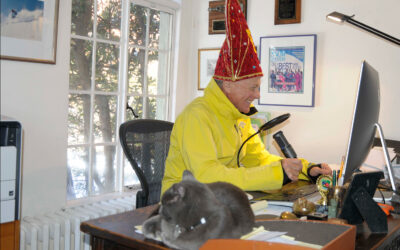
During my tenure as Editor of Realskiers.com, one of the benefits of membership has been a long-form ski review, accompanied by test scores complied by our small volunteer army of testers. Long-form reviews are still a principal component of the Realskiers’ membership bundle of benefits, but the data will no longer be a part of the presentation for the simple reason the paucity of entries results in data that is more detrimental than beneficial.
Now for the not so simple reasons. The Realskiers Test Team has always been primarily comprised of shop personnel, from owners down to seasonal salespeople. Once upon a time, this produced hundreds of what were then paper test cards, often with 20 or more entries per model. The test cards are digital now, which creates its own set of challenges – pencils don’t suddenly go haywire for no apparent reason, but apps do – but the much greater problem is that shops are already understaffed; sending a manager and a coterie of testers off to test skis for 2-3 days is not in the cards.
There are also fewer demo events to attend, in part because suppliers are imposing early order deadlines, drastically shrinking the window between the first appearance of demo skis and the drop-dead date for submitting an order. And that’s assuming the weather cooperates, but last year at Mammoth, it was in no mood to trifle. The event lasted all of one day before being weathered-out.
With fewer testers getting fewer opportunities to test, getting any kind of feedback has become a season-long chase. The end results are wildly imbalanced, and so few in number that if you start tossing out anomalies, pretty soon you don’t have many numbers to work with. It seems apparent to this ski test maven – I’ve been at this game since the winter of 1986/87 – that the numbers can’t be trusted. Nor is there some formula by which they can be “fixed.” When numbers beg for fixing, you know their value to the end user is damaged beyond repair.
To put the present circumstances in perspective, allow me to cite my friend Bob Lefsetz – whose copious output you can read at (https://www.lefsetz.com/), a prolific social commentator – and passionate skier – who happens to be the most influential blogger in the contemporary music omniverse, on the frailties of data, to wit: “Not all data is created equal.” To which he trenchantly adds, “But even worse, all data analysis is not created equally.” Lefsetz is pontificating about today’s political punditry, but his observations pertain to any realm where numbers posture as the distillate of reality.
Despite its air of substance, data can distort reality even before it’s entered. Any tests that use a 5-point scale will always end up cramming nearly the entire field into a de facto 3-point range, a phenomenon I first observed when reviewing skis for Snow Country Magazine. When I started with a 5-point scale, the better testers were often putting an “X” on the line between enumerated boxes, to create some separation in a field that might extend to 20 models. I realized then that if I really wanted to identify the best in any category – in a market with far more brands than we have today – I needed a 10-point scale. This allowed me to then rank the results in order of finish, helping drive consumer interest in our start-up publication.
The reason I published our detailed test results then and have done likewise for Realskiers subscribers to the present day, is that people place a disproportionate trust in data, as if the numbers being published weren’t made by the same people who wrote the text. My point is that numbers aren’t inherently truthful, despite being composed of numerals instead of letters.
From my perspective, the biggest issue with data and its interpretation is that it’s an arid way to describe the ski experience. It potentially still has some value when comparing one ski to another, but whether a ski earned a 3.7 versus a 4.0 for edge grip still doesn’t tell you much about how it feels to ski on it. Even this limited attribute goes out the window when one ski result has 3 entries behind it and another has 30. There’s no way to equalize the imbalance in the number of entries, period. Not to mention that treating all results equally is based on the generous assumption that all skiers are equally qualified to submit entries in the first place.
It’s reached the point that numbers are so problematic they are as likely to distort as to describe a ski’s performance envelope. Testing skis on snow is still a valid exercise, particularly when asking a specific question about a specific feature, such as a change to a single core component. For testing to have any validity beyond this limited scope, there has to some rationale to the composition of the test team, just as there has to be an educated, common understanding of each test criterion. These requirements beg for a measure of control over the data collection process, control that I can’t exert from where I sit.
One unequivocal benefit to sharing ski test data with my Dear Readers: doing so provided a system for ordering each category’s reviews based on merit rather than the alphabet. Despite the absence of published data, I will continue to divide each genre into Power and Finesse camps and rank them according to my estimate of how they measure up against their peers.
If there’s a redeeming aspect to the demise of dependable data, it’s that its absence places the emphasis of any review squarely on the narrative, where it has always belonged. The qualities that real skiers seek in a new ski can’t be conveyed by numbers, and aren’t so easily fashioned into readable prose, either, as a romp through almost any ski website will sadly make plain.
The goal of any ski review is, or ought to be, to help the prospective ski buyer sort through a maze of options and end up on the best choice for him or her. The average price for a quality ski/binding set-up will easily exceed $1,000 this season, so it pays to do a little research. There is no better place on earth to do this research than Realskiers.com, if for no other reason than our site has one asset no other can simulate, imitate or copy: me. One of the privileges of membership is that I answer all queries personally, and I stay with you until we get your problem solved.
I look forward to hearing from you.
Related Articles
U.S. Shops with 3-D Scanning Capability
Far West Footloose Sports, Mammoth Lakes, CA (BootDoc) California Ski Company, Berkley CA (Fischer) Gravity Sports, Mt. Bachelor, OR (Pulse) Start Haus, Truckee, CA (Pulse) Sports Creel, Spokane, WA...
Is 3D Imaging a Fad or the Future?
Any serious attempt at bootfitting begins with an assessment of the customer’s feet and lower legs. This appraisal can be as superficial as measuring each foot for length or as detailed as a complete skier profile accompanied by a few basic biomechanical evaluations.
Better bootfitters gather further information from a litany of details that lie outside the scope of the usual foot-measuring device, such as a Brannock. The veteran bootfitter watches how the customer walks, sits and assumes a skiing position, for starters. The savvy fitter can even spot limb-length differences and redistribute pressure around the foot in places no measuring stick can quantify.
If this sounds like a pretty sophisticated skill set, well, it is. Yet many, if not most, prospective boot buyers approach the bootfitting exercise with the same enthusiasm they usually reserve for a root canal. Suspicions are often confirmed when the first boot proffered seems crazily short. Even the most knowledgeable fitter is obliged to re-establish his/her credibility just to move the bootfit process pass square one.
Of Podcasts, Archives & Revelations
According to my tight-knit circle of advisors, idolaters, sycophants and astrologers, I was made for this medium.
Of course, any garden-variety sycophant will whisper words of inspirational twaddle, but the faint note of sincerity I detect in the smarm-storm of platitudes meant to buck me up has proven sufficient to spur me to action. I quickly acquired a very professional looking microphone and a pop filter to knock down my fierce sibilants. To preserve my objectivity, I opted not to take any lessons, follow any tutorials or otherwise prepare myself for this venture. By the powers vested in me as the Pontiff of Powder, I declare myself to be, now and forever after, a podcaster.
I’ll give you a moment to recover.





